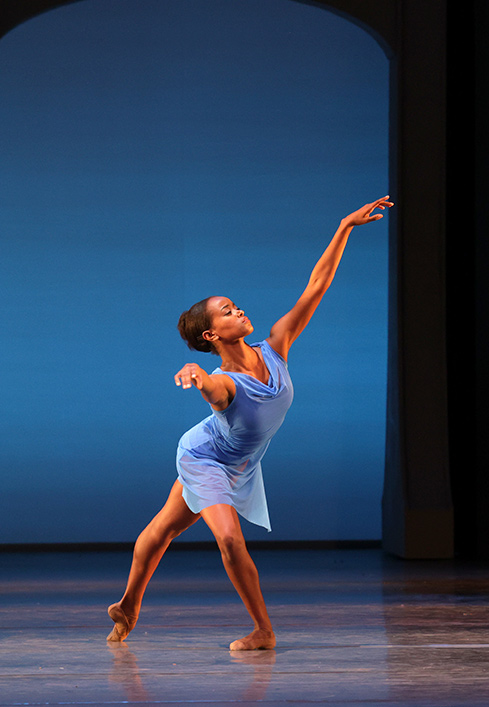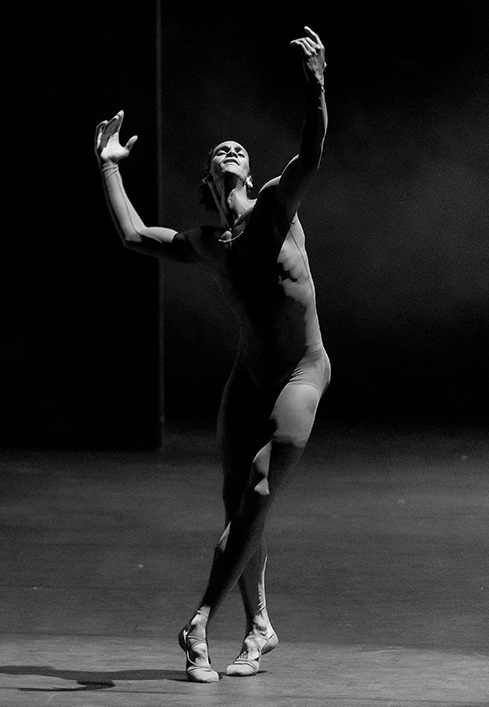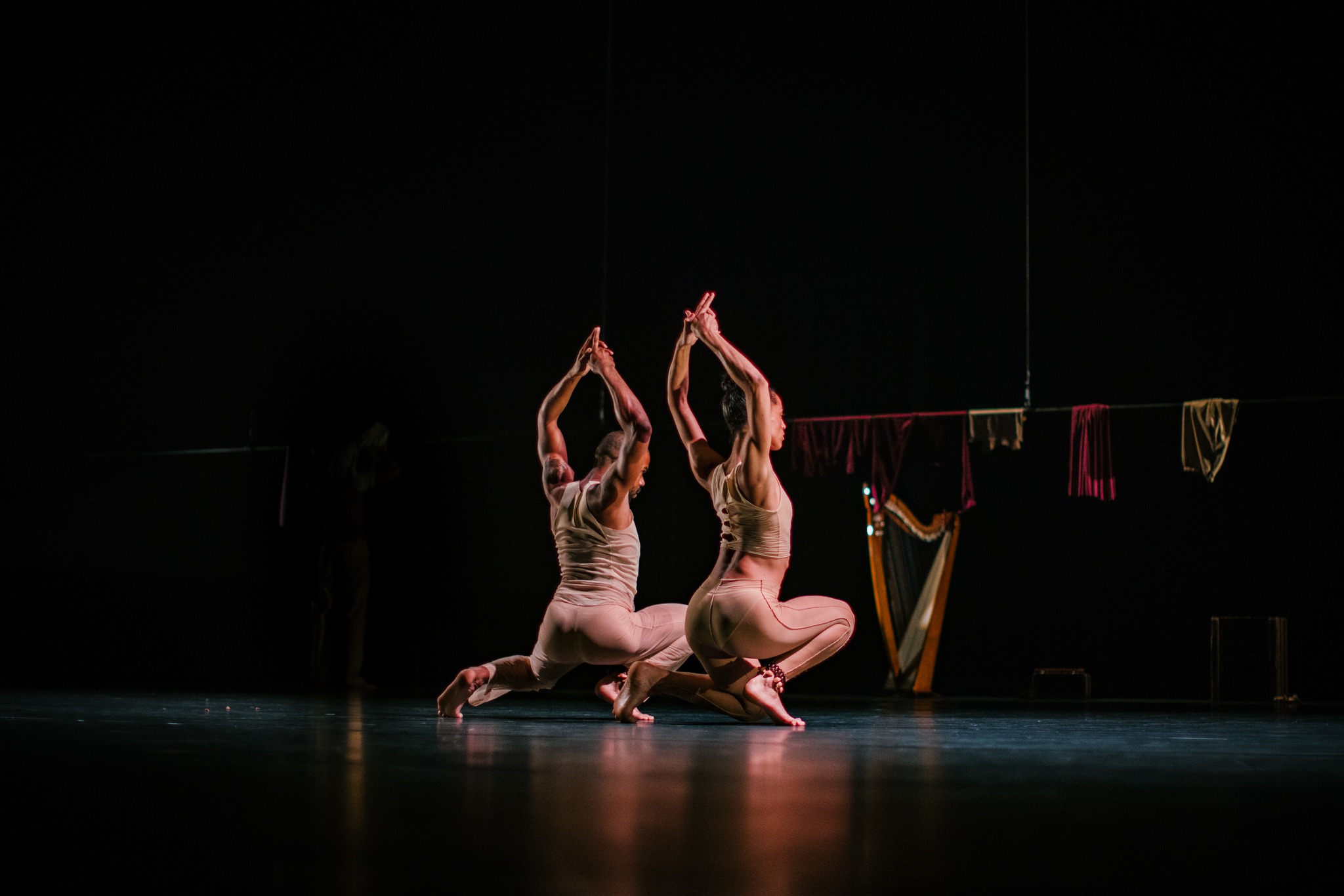
‘Every work I create should be its own world’
Sedrig Verwoert on his works in Dancing Diversity and the dancers in the principal roles
Vulnerability, integrity and connection: these values are the common factors pervading the work of dancer, choreographer and Dutch National Ballet Young Creative Associate Sedrig Verwoert. In the Black Achievement Month programme Dancing Diversity, Verwoert shows his versatility as a creator and performer, with two solos for DNB dancers Sebia Plantefève-Castryck and Davi Ramos, and The Ritual, a duet he dances with Alanna Archibald to live music by Ranie Ribeiro and Phantom Wizard (Isha Forster). He talks to us about his choreographic works and the collaborations he sought out.
You already had a long history with the dancers you created the two solos for, especially Sebia. How did that come about?
“I’ve known Sebia for over twelve years. I initially met her through her sister, who won So You Think You Can Dance in the season when I took part as well. Four years ago, I came into contact with Sebia again at Dutch National Ballet, and I created the solo work The Hard Rocks Will Seem Soft To Us for her. She had just been taken on by the Junior Company and I had only recently started choreographing for Dutch National Ballet. I was really pleased the company took her on because there were — and are still — hardly any Black dancers here, whereas so many are waiting for that opportunity. The fact that we started virtually together at DNB as a Black dancer and a Black choreographer felt really special to me. All that comes together in The Hard Rocks Will Seem Soft To Us.”
What makes Sebia so special as a dancer?
“All the material Sebia learns seems to mould itself to fit her body. She is very sincere in her movements and I can always rely on her to deal conscientiously with the knowledge we share in the space when we work together. That is why I can trust her completely — which is so valuable. Sebia is one of the dancers I’ll always contact whenever I get the opportunity to create something here. She’s my girl.”


And what about Davi?
“I’ve also been working with Davi for about four years, ever since he moved from the Junior Company to Dutch National Ballet. What makes working with him such a nice experience for me personally is that we have similar bodies. As a dancer, I always found it quite something to work with a Black choreographer because then you have a starting point from which to convey the same information. Davi is also one of those dancers who really stands out on the stage. I always say, ‘Davi transforms himself.’ He can be a really elegant prince, but he can also move with an organic, almost animalistic quality. That is a valuable talent.”
Transformation is an important theme in the solo work you created for Davi last season, Slightly Damp In A Misty Street. What is it about exactly?
“This solo piece portrays Davi’s vulnerability, and both his ability to transform himself as a dancer and the transformation he has been through as an artist — especially coming from Brazil, from a very different culture. So the work is to some extent about making your dreams come true in a White person’s world without forgetting the sounds of home.”
“Slightly Damp In A Misty Street and The Hard Rocks Will Seem Soft To Us are two of the three solo works I created in recent years for Black Achievement Month – even if Slightly Damp didn’t premiere until last June, during the International Young Patrons Gala. When you create a work in a context like that, it soon acquires an extra emotional charge because it’s inevitably celebrating the contributions of Black creators who don’t get the recognition they deserve. But I try to see it mainly as a gift I can give to a Black dancer and something we then create in partnership.”
You created The Hard Rocks Will Seem Soft To Us and Slightly Damp In A Misty Street for two very different dancers, at very different points in your career. How do these works relate to one another?
“My aim in all my solo works is to reveal the dancer’s vulnerability, tenderness and integrity in addition to their technical skills. These two works fit that pattern. Another common aspect of all my works is to have the story of the choreography reflected in all the creative choices. Fashion and music play a key role in this regard. Every work I create should be its own world; when the curtain rises, the audience should feel they are entering somewhere new. On the other hand, my works are all linked in a series, reacting to one another as part of a single process, one ongoing conversation.”
How does The Ritual fit into that conversation?
“Right, The Ritual… It’s always difficult to see your own works ‘from the outside’ but that is perhaps even harder with The Ritual because that work contains even more of ‘myself’ than some others. I had the idea for this piece when I was in Suriname last summer. I was born in Suriname but have lived in the Netherlands since the age of three, and this was the first time I’d been back in twenty-seven years. It was a very spiritual and emotional experience; I felt I was really having to deal with questions like ‘Where do you come from?’ and ‘What is your identity?’ At that same time, I was involved in the group work Within/Without (which premiered in October 2022 in Koninklijk Theater Carré, ed.). It explores issues relating to connecting with one another and the relationships you develop with each other and the space around you. That was when I realised that in my series of works, The Ritual was the piece that should really have preceded Within/Without. The Ritual would be about the rituals that have made you who you are, the identity that determines your relationships with everything around you and how you approach this. When I had that realisation, I knew this was an idea I wanted to develop further. I had a duet in mind and so I approached the dancer Alanna Archibald.”

What was it like collaborating with Alanna on this?
“Not just with her, but also with the two musicians! I think it’s really important to emphasise that. It’s a duet, but the musicians – Ranie Ribeiro and Phantom Wizard (Isha Forster) – are an integral part of the performance. They aren’t hidden in the orchestra pit, they move around with us, which makes the piece almost a kind of quartet. But to be sure, I dance with Alanna. That gives a personal dimension to our collaboration. We also have many things in common: we are both mixed-race dancers with a classical background and experience of working as the only Black artists in a White institution. In The Ritual, we tell stories about such themes, but it’s not about how sad that is: our focus is on rising above that context and presenting our own perspectives and transformation. The work is also about the rituals that formed us, our background — the legacy of slavery, for example. We don’t touch upon it directly in the performance, but it is still something within us.”
Why did you decide to dance in The Ritual yourself?
“At first I was wondering whether to hold auditions for the role, but I think representation is very important and especially in a personal work like this, it really matters who performs it. What is more, I was hearing the message that people were missing me on the stage. That made me realise that just because I’m a choreographer, it doesn’t mean I should focus exclusively on that creative aspect. It’s important to keep the physical movement side going too. Nearly every time I finish a performance I think to myself, Wow, I may not be twenty-one any longer but at least I can still manage this physically and I still have something to say as a dancer.”
In terms of the dance idiom, how does The Ritual differ from the two solo works in this programme?
“Unlike the other two pieces, The Ritual is very much a contemporary work. It’s a mash-up of different styles, including cultural dance forms. Although both Alanna and I are classically trained dancers, we enjoy throwing in other styles of body language. This also lets us incorporate a different kind of ritual in the work — the transformation currently taking place in the dance world that is breaking down the barriers. We’re seeing this at Dutch National Ballet too. Of course you need to keep the articulation required to dance Swan Lake or a work by (William – ed.) Forsythe, but these days a dancer also needs to be able to roll over the floor. Which brings me back to Sebia and Davi: they are so versatile and can show so many different sides to themselves. They could dance anything! And that is precisely what makes them so interesting.”
Text: Rosalie Overing